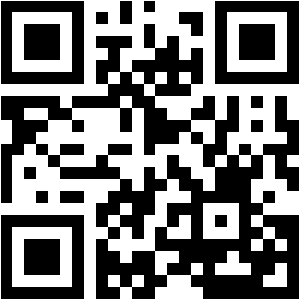MS2016 Phase Transformation and Kinetics Assignment, NTU, Singapore Identify and sketch the planes (4 2 0) and (0 3 2) in both FCC and BCC Fe lattices
| University | Nanyang Technological University (NTU) |
| Subject | MS2016: Phase Transformation and Kinetics |
AY2223 S1: MS2016 – CA1 (Take-Home Assignment)
Topics – Imperfections and Diffusion in Solids
1. Identify and sketch the planes (4 2 0) and (0 3 2) in both FCC and BCC Fe lattices.
(i) On those identified planes, sketch and identify the total number of octahedral and tetrahedral sites available for an interstitial atom to occupy.
(ii) Which plane has the lower surface energy in both systems? You can use planar packing density of both planes as an indicator or other means.
(iii) In FCC Fe system, on both these planes, assume that only one ½ 0 0 site is occupied (no other interstitial sites are filled). Write strain energy equation for these two scenarios. You don’t have to calculate anything, but identify the terms, directions, etc. in the equations.
(iv) Similar to Q1(iii), take BCC Fe and assume that only one ½ ½ 0 site is occupied on both those planes. Write strain energy equation for the two scenarios. No calculation needed, but identify the terms, directions, etc. in the equations.
2. Assume that in the below Fig. Q2 we are referring to substitutional solid solutions. Plot how the enthalpy, entropy and the total free energy vary for these two systems as you change the composition by substitutional defects. In which of these two cases, substitution is endothermic or exothermic process? For each system, plot all (enthalpy, entropy, total free energy) in sketch for comparison.
3. We have talked about F-center defect in the class. To get more insights into the broad color center defects category, discuss and elaborate the following:
(i) Take any two types of color center defects and explain the principles behind in detail.
(ii) Take any two systems as representative examples and elaborate the mechanisms of color centers in them. Discuss the crystal structures, mechanisms behind the color change, and their stability (in terms of color change and associated changes to crystal structure; that is, is the color change permanent or will it change back after the irradiation process, for instance?).
4. The crystal structure of a hypothetical compound A2B (A: cation with +1 charge and B: anion with –2 charge) can be simply visualized as an FCC lattice with all the tetrahedral sites occupied.
(i) Sketch the structure with atoms.
(ii) After diffusing one cation ‘C’ per unit cell (substitution), calculate the strain energy because of this event? What changes are expected in this cell (that is, type of defects that are forming) and also list down the new chemical formula of this system (if any change to the original is seen)?
(iii) If one ‘D’ anion is substituted into the original lattice (A2B), what is the strain energy associated. What changes are expected in this cell (that is, type of defects that are forming) and also list down the new chemical formula of this system (if any change to the original is seen)?
Take note that in (ii) and (iii), we are not referring to a site, but an atom/cell. Radii (in nm) of A, B, C and E are 0.099, 0.133, 0.051, and 0.140, respectively. C is a cation with +2 charge; and E is an anion with a –1 charge.
5. A diffusion couple is prepared using BCC pure tungsten and a tungsten-1 at% thorium alloy. After several minutes of heat treatment at 2000°C, a transition zone of 0.01 cm thickness is established. What is the flux of thorium atoms (in atoms/cm2 -s) if diffusion is due to (a) volume diffusion; (b) grain boundary diffusion; and (c) surface diffusion?
Subsequently, calculate the effective diffusion coefficient and flux if the volume fraction of atoms diffusing through volume is 0.8, through grain boundary is 0.09 and through free surface is 0.11.
Use the following information:
– Assume that the diffusion process to be steady state.
– The lattice parameter of BCC tungsten is 3.165 Å.
– Volume (or bulk) diffusivity of thorium atoms, Dv = 1.0 exp(-60400/T) cm2/s, its grain boundary diffusivity is Db = 0.74 exp (-45300/T) cm2/s, and its free surface diffusivity is Df = 0.47 exp(-33400/T) cm2/s.
- NUR 3015 Health and Social Policy Summative Assignment Report 2025/26 | SIT
- PS5009MKT Digital Business Assessment Coursework | Coventry University
- 5007MKT Marketing Insight Assignment Coursework 2 – Coffee Shop Industry | Coventry University
- HL3044 The Legends of King Arthur Assignment Semester 1, AY2025-26 | NTU
- AVM343 Airport Design and Planning End-of-Course Assessment – July Semester 2025
- BX2091 Tourism & Leisure Management Assessment 3 Research Workbook 2026 | JCU
- ICT239 Web Application Development End-of-Course Assessment – July Semester 2025
- Health Economics and Policy Assessment Essay | TU London
- Project on Probability and Statistics using MATLAB Assignment | NUS
- HS2261/HS2232 Adult Nursing 2 ICA 4: Care of Patient with Musculoskeletal Disorder


